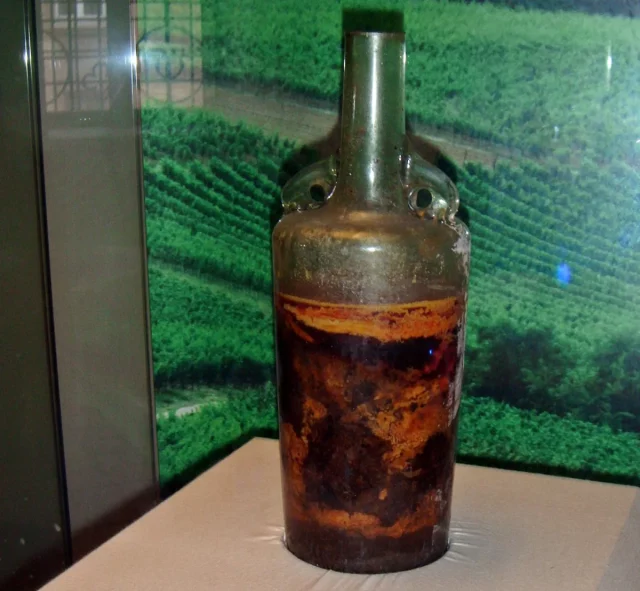What is the oldest bottle of wine in the world?
The oldest bottle of wine in the world is housed in the Historical Museum of the Palatinate in Speyer, Germany, but how old is it exactly, and would it still be safe to drink?

The Historical Museum of the Palatinate in Speyer, Germany is home to what is widely believed to be the oldest bottle of wine in the world.
The bottle is said to have been discovered upon the excavation of the grave of a Roman nobleman and woman in 1867, in what is now Speyer.
Remarkably, the bottle is believed to date back all the way to 325 CE, making it close to 1,700 years old. The 1.5-litre (Magnum in today’s wine bottle sizing) vessel was supposedly intended to accompany the couple on their journey to the afterlife.
Even more remarkably, it is thought that the liquid housed inside the bottle may actually still be safe to drink.
There is a qualifier here, though. The ‘wine’ inside the bottle is highly likely to actually no longer be wine at all, but rather a liquid that has lost its alcohol content over time.
The reason the ‘wine’ is still considered likely safe to drink is twofold. Firstly, the wine was sealed with wax rather than cork – which would have rotted away over the intervening near-2,000 years. Secondly, thanks to a thick layer of olive oil, which was intended to preserve the wine inside the bottle.
That is not to say it would be a partiularly tasty tipple, though.
Partner Content
“Micro-biologically it is probably not spoiled,” professor Monkia Christmann told Futurism. “[But] it would not bring joy to the palate.”
Ludger Tekampe, who heads up the department responsible for housing the liquid described it as “remarkably stable.”
He added, “it’s not clear what would happen if air gets into the wine”.
The ‘wine’ inside the bottle is likely to have been comprised of local grape varieties planted during the Roman rule of what is now modern day Germany.
Read more:
This is the oldest evidence of wine in Europe
Ancient wine discoveries made in Mediterranean
Related news
For the eleventh day of Christmas...




